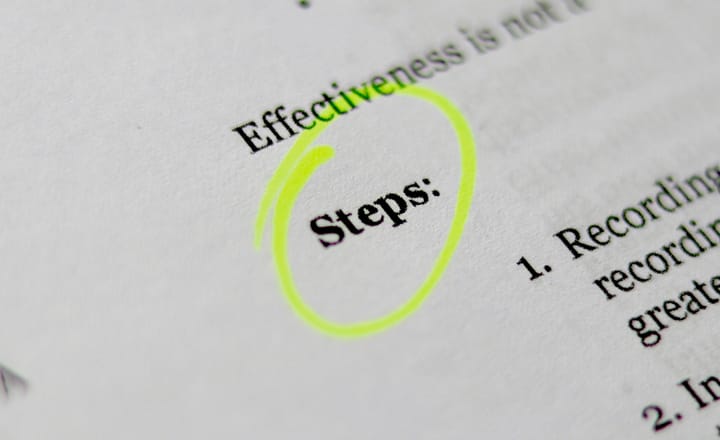Build a Business That Works for You—Not the Other Way Around
You started your business for freedom—freedom to choose your clients, control your schedule, and do work that excites you.

Build a Business That Works for You—Not the Other Way Around
You started your business for freedom—freedom to choose your clients, control your schedule, and do work that excites you. But if you’re like many solopreneurs, that freedom can slowly start to feel like a never-ending to-do list.
✔ Clients rely on you for everything.
✔ You’re the only one who knows how things work.
✔ You’re stuck handling every little detail—because it’s just easier to do it yourself.
It doesn’t have to be this way.
Your business should support your life—not consume it. And the key to making that happen?
Systems, processes, and SOPs (Standard Operating Procedures).
Even if you never plan to sell your business, putting clear systems in place gives you:
✔ More time—so you can focus on growth, creativity, and what matters most.
✔ Less stress—because you’re not constantly reinventing the wheel.
✔ A smoother, more predictable business—without chaos behind the scenes.
✔ Room to grow—so you can take on bigger opportunities (or take a real vacation).
This isn’t about making your business robotic.
It’s about giving yourself breathing room.
Let’s break it down into simple, actionable steps.

Step 1: Spot the Time Traps That Are Slowing You Down
Not sure where to start? Look for the repetitive tasks that keep you stuck in busy work instead of moving your business forward.
Ask yourself:
- What tasks do I repeat every day or week?
- What slows me down or feels disorganized?
- What do I avoid delegating because "it’s easier if I just do it myself"?
Some common areas where solopreneurs get stuck:
✔ Client onboarding – Sending contracts, welcome emails, intake forms.
✔ Invoicing & payments – Chasing payments, following up, tracking revenue.
✔ Marketing – Writing, scheduling, and tracking content.
✔ Customer service – Answering emails, managing inquiries, sending updates.
The goal isn’t to do everything at once. The goal is to document just one process and make it easier for yourself.
Step 2: Create Your First Simple SOP (Standard Operating Procedure)
If "creating systems" sounds overwhelming, don’t worry.
This isn’t about complicated manuals or corporate-style operations.
A Standard Operating Procedure (SOP) is just a step-by-step guide for how something gets done.
Here’s an easy way to create one:
🔹 Purpose – Why this process matters.
Every process should have a clear purpose. This helps you and anyone who might take over the task understand why it’s important.
Example: “This SOP ensures every client is onboarded smoothly, creating a professional and consistent experience.”
🔹 Steps – A clear, repeatable list of actions.
Break the process into simple, easy-to-follow steps.
Example:
- Send a welcome email with an intake form.
- Schedule a kickoff call.
- Set up a client folder in Google Drive.
- Add them to your project management tool.
Keep it clear, specific, and to the point.
🔹 Ownership – Who is responsible for doing it.
Even if you’re currently handling everything, it’s good to define ownership.
Example: “This process is managed by me, but when I hire an assistant, they will take over steps 2-4.”
That’s it. No fluff, just clarity.
And once it’s written down?
You can refine it, simplify it, and—eventually—hand it off.
Step 3: Use Simple Tools to Keep It Organized
You don’t need fancy software to organize your systems. You just need a place to store and update them.
Some easy options:
✔ Google Docs – A simple document with written steps.
✔ Notion or Trello – A visual board for organizing tasks.
✔ Checklists in your project management tool – So you never miss a step.
Start with one process. Keep it simple.
You can always improve it later.
Step 4: Test It, Tweak It, and Let It Work for You
Once you have your first SOP, put it to the test.
💡 Could someone else follow it without needing to ask questions?
💡 Are there unnecessary steps that can be simplified?
💡 Could this be automated or delegated to free up your time?
Every time you document a process, you make your business easier to run, easier to grow, and easier to manage.
This Isn’t Just About Systems—It’s About Your Freedom
You don’t need to wait until you’re overwhelmed to start creating systems that support you.
Building simple, repeatable processes now means:
✅ You stop running in circles—and start moving forward.
✅ You create space for bigger opportunities.
✅ You build a business that works—whether you’re there or not.
And if you ever want to sell your business? You’ll have a well-structured, valuable asset ready for a smooth transition.
But more importantly—you’ll have a business that supports your life, not one that runs it.

Start Small. Start Today.
You don’t have to do it all at once.
👉 Pick one task this week that slows you down.
👉 Write down the steps in a simple Google Doc.
👉 Test it, refine it, and repeat with another task next week.
Every small step brings you closer to a business that runs with more ease and less stress.
Need help figuring out where to start?
Let’s talk—because your business should work for you, not the other way around.


